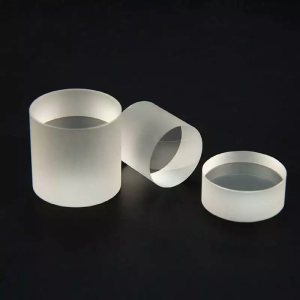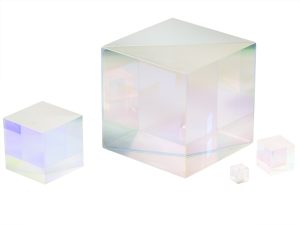
Reflection Prism Manufacturers: Technology and Application Analysis
The total reflection prism uses the total reflection phenomenon of light to achieve light path steering, beam splitting or beam combining through precise angle design and surface treatment. It is the core component of lasers, medical imaging and fiber-optic communications. When choosing a manufacturer, you need to pay attention to technical strength, high-precision equipment and strict quality inspection. In the future, it will evolve towards miniaturization, new materials and intelligent manufacturing, and continue to promote the efficient stability and innovative breakthroughs of optical systems.
The total reflection prism is an optical component designed based on optical principles and is widely used in laser technology, medical equipment, communication systems, measuring instruments and other fields. As an important part of the optical industry, total reflection prism manufacturers play a key role in technology research and development, production processes and market demand. This article will analyze in detail the basic principles, manufacturing processes, application fields and key factors of total reflection prisms.
1. The basic principle of total reflection prism
The core principle of total reflection prism is to use the total reflection phenomenon of light. When light is emitted from a light-dense medium (such as glass) to a light-sparse medium (such as air), if the incident angle is greater than the critical angle, the light will not be refracted into the light-sparse medium, but will be completely reflected back into the light-dense medium. The total reflection prism ensures that the light is totally reflected inside the prism by precisely designing the angle and surface treatment of the prism, thereby realizing functions such as steering, beam splitting or beam combining of the light path.
2. Manufacturing process of total reflection prism
The manufacturing process of total reflection prism involves multiple precision steps, mainly including:
1. Material selection: Total reflection prisms usually use optical glass or quartz glass as the substrate, which has high transmittance, low scattering rate and good mechanical stability.
2. Cutting and molding: According to the design requirements, the glass material is cut into specific shapes and sizes. This process requires high-precision cutting equipment to ensure the geometric accuracy of the prism.
3. Polishing and coating: The surface of the prism needs to be finely polished to reduce light scattering and loss. In addition, in some application scenarios, the surface of the prism needs to be coated with an anti-reflection film or a reflective film to optimize the optical performance.
4. Inspection and calibration: After manufacturing, the prism needs to undergo rigorous optical inspection to ensure that its optical performance meets the design requirements. Common inspection items include angle accuracy, surface flatness, and transmittance.
3. Application fields of total reflection prisms
Due to their unique optical properties, total reflection prisms are widely used in many high-tech fields:
1. Laser technology: In lasers, total reflection prisms are used to redirect and focus light beams to ensure stable output of laser beams.
2. Medical equipment: In medical imaging equipment (such as endoscopes), total reflection prisms are used to guide light to help doctors observe the internal structure of the human body.
3. Communication systems: In optical fiber communications, total reflection prisms are used for beam combination and splitting of optical signals to improve communication efficiency.
4. Measuring instruments: In optical measuring equipment, total reflection prisms are used for precise control of the optical path to ensure the accuracy of the measurement results.
4. Key factors for selecting a total reflection prism manufacturer
When selecting a total reflection prism manufacturer, the following factors are crucial:
1. Technical strength: whether the manufacturer has advanced optical design capabilities and manufacturing processes, and whether it can customize production according to customer needs.
2. Quality control: whether the manufacturer has a strict quality control system to ensure that the optical performance of each batch of products is stable and reliable.
3. Production equipment: whether the manufacturer has high-precision processing equipment and testing instruments to ensure the geometric accuracy and optical performance of the product.
4. After-sales service: whether the manufacturer provides complete after-sales service, including technical support, product maintenance and problem solving.
5. Industry experience: the manufacturer’s experience accumulation in the optical industry and customer reputation are also important references for selection.
5. Future development trends
With the continuous advancement of optical technology, the application field of total reflection prisms will be further expanded. In the future, total reflection prism manufacturers will face the following development trends:
1. Miniaturization and integration: with the advancement of the trend of equipment miniaturization, total reflection prisms will develop towards smaller size and higher integration.
2. Application of new materials: The research and development of new optical materials will bring higher optical performance and wider application scenarios to total reflection prisms.
3. Intelligent manufacturing: The introduction of intelligent manufacturing technology will improve the production efficiency and product consistency of total reflection prisms and reduce production costs.
Conclusion
As a key component in the optical system, the manufacturing technology and application prospects of total reflection prisms have attracted much attention. Choosing a total reflection prism manufacturer with strong technical strength and strict quality control is crucial to ensure the performance and stability of the optical system. With the continuous development of optical technology, total reflection prism manufacturers will continue to promote innovation and progress in this field and provide better optical solutions for all walks of life.
Hanzhong Brisun Optics Co., Ltd. Is the high precision optical element manufacturer provides customized production of Various optical lenses, including spherical lens, cylindrical lens, optical window, mirror, prism, filter, metal base mirror and other high-precision optical elements. The base materials include various optical glass, fused quartz, calcium fluoride (CaF2), zinc selenide (ZnSe), germanium (GE), silicon (SI), sapphire, metal and other materials. And provide antireflective film, high reflection film, spectroscopic film, metal film and other optical coatings.
Welcome to OEM and Purchasing!


